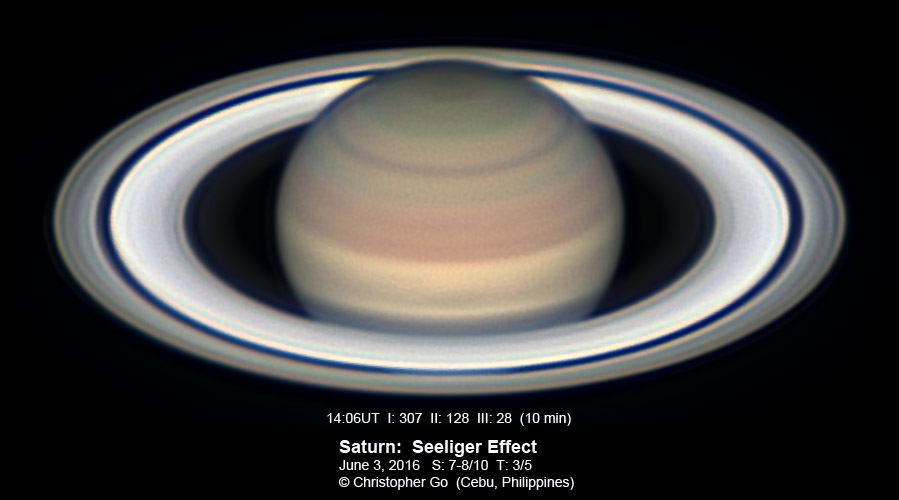Star Guide: Saturn making itself known
By Tony Berendsen
On the night of June 2, Saturn was at opposition to the Earth. There was no sound or rumbling of the ground to announce the event, but for astronomers there was signal of light.
Opposition happens when one planet is opposite another relative to the sun. It happens to the Earth and every outer, or superior, planet once a year when Earth swings around its orbit in between them and the sun. Not only is opposition when we are closest to our planetary neighbors, it is the best time to view them.
Since a planet at opposition rises in the east just as the sun sets, it’s the easiest time to find them with the unaided eye. To find Saturn in the evening sky shortly after sunset and look to the eastern horizon approximately where the sun rises in the morning. You will have some help from Mars this year because it’s just above Saturn to the right.

Saturn will be visible for most of the summer. Photo/Christopher Go
Planets describe an arcing path across the sky, similar to the sun. The name of the arcing path is the ecliptic. Using ecliptic path as a guide find the brightest red star (Mars) near the eastern horizon, at about 9:15pm, and trace halfway back to the horizon. There you will find a fairly bright yellowish looking star — Saturn. For those who are familiar with the constellations, Saturn is in Scorpio.
Even though Saturn is at its close approach for the year it’s not very close at all at 9 AU (astronomical units). That’s nine times the distance between the Earth and the sun (837 million miles). Even at light speed it’s an hour and a half travel time.
Opposition is also the best time to view Saturn through binoculars or a telescope. And if you are a planetary imager, like Christopher Go of the Philippines, you might find yourself staying up late to capture Saturn high in the night sky away from the heavy atmospheric distortion near our horizon to catch the Seeliger effect.
Go says, “The Seeliger effect occurs during opposition where the ice particles of the ring reflect sunlight without any shadows. This causes the ring to brighter.”
His image, taken on June 3 from his home in the Philippines shows the brightened ring face. The effect is named after Hugo von Seeliger, 1849-1924, as a result of his study of the changing albedo of Saturn.
For causal observers like myself, Saturn is a jewel of a planet to see through the eyepiece of a telescope. Saturn will be up in the evening sky all summer, so there will be plenty of warm weather evenings for viewing. If you don’t have a telescope and want to take a peek, the Fleishmann Planetarium and the Astronomical Society of Nevada will be offering free viewings on selected evenings. I’ll be watching all summer long from the Dark Skies Cosmoarium at Northstar.
Tony Berendsen runs Tahoe Star Tours. He may be reached at 775.232.0844 or tony@tahoestartours.com.


